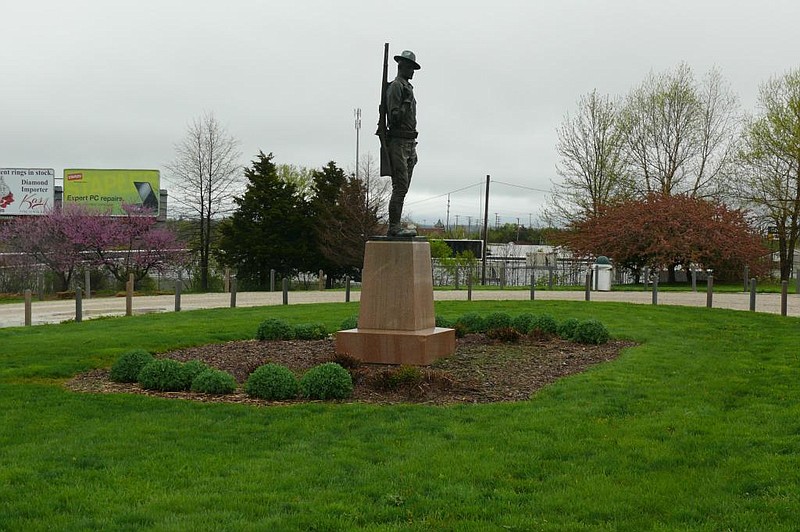Behind the Staples and across the Steak "n Shake on Missouri Boulevard, a lone sentry from a war few remember, but which played a critical role in establishing the modern National Guard, stands watch over the city.
The soldier represents the more than 10,000 Missourians who served in the Spanish-American War, Boxer Rebellion and Philippines from 1898-1902, said Missouri National Guard historian Charles Machon.
"The monument was erected by the United Spanish War Veterans who proposed erecting a monument along a highway leading into Jefferson City," Machon said. "Since then, it's been moved several times."
According to the Missouri Department of Transportation, the earliest record of the monument dates back to 1958. On Jan. 20, 1960, the Highway Commission approved a site study and Carl C. Mose, of the Fellow National Sculpture Society, was chosen as the sculptor. After completion, the monument was moved between temporary homes until reaching its current location in 1967.
Although the monument itself has been moved and is often forgotten, the legacy of the battles it represents remains rock solid and is the foundation of the U.S. military, Machon said.
The Spanish-American War was one of the key determining factors in organizing a regular militia force amongst the states, setting the stage for legislation that would create the modern National Guard.
The difficulties of organizing a force to fight were national in scope, but particularly impacted Missouri. With the inadequacies of America's military establishment, the Dick (Militia) Act was passed by Congress in early 1903, the first major change in the militia law in 111 years.
"The Dick Act standardized the militia organizations, equipment, arms and discipline with that of the regular Army across the nation," Machon said.
"To carry out these provisions nationally, the National Guard appropriation of 1903 was increased from $400,000 to $2,000,000."
Some examples of the immediate impact to the Missouri National Guard included the replacement of all the old rifles with the Springfield 1903 model, new guns for the two artillery batteries and a required physical examination of every Guard member. The biggest impact to training was the full federal funding of summer encampments, annual training as it is known by today's terminology. One major problem still existed: obtaining and maintaining better armories.
Missouri was a microcosm of the problems facing the states when mobilizing militia members to support the Spanish-American War or any other overseas military action.
"The support of the state militias was critical in this time period due to the small and limited standing national army," Machon said. "The Missouri state militia companies could not be deployed en masse, but had to volunteer individually for duty outside the United States."
In addition, Missouri's governor delayed mobilizing the troops until direct orders were received from the federal government.
The end result was great disappointment amongst the Missouri troops who were the last to enter federal service and did not see action, or even leave the states, except for St. Louis Battery A.
"The significant changes in the National Guard that we value today happened because of the volunteer spirit shown by Missourians and men across the nation," Machon said.
"For those who take the time to look for it, the Spanish American Memorial Monument is a great reminder of how events in the past have shaped our current national defense."

